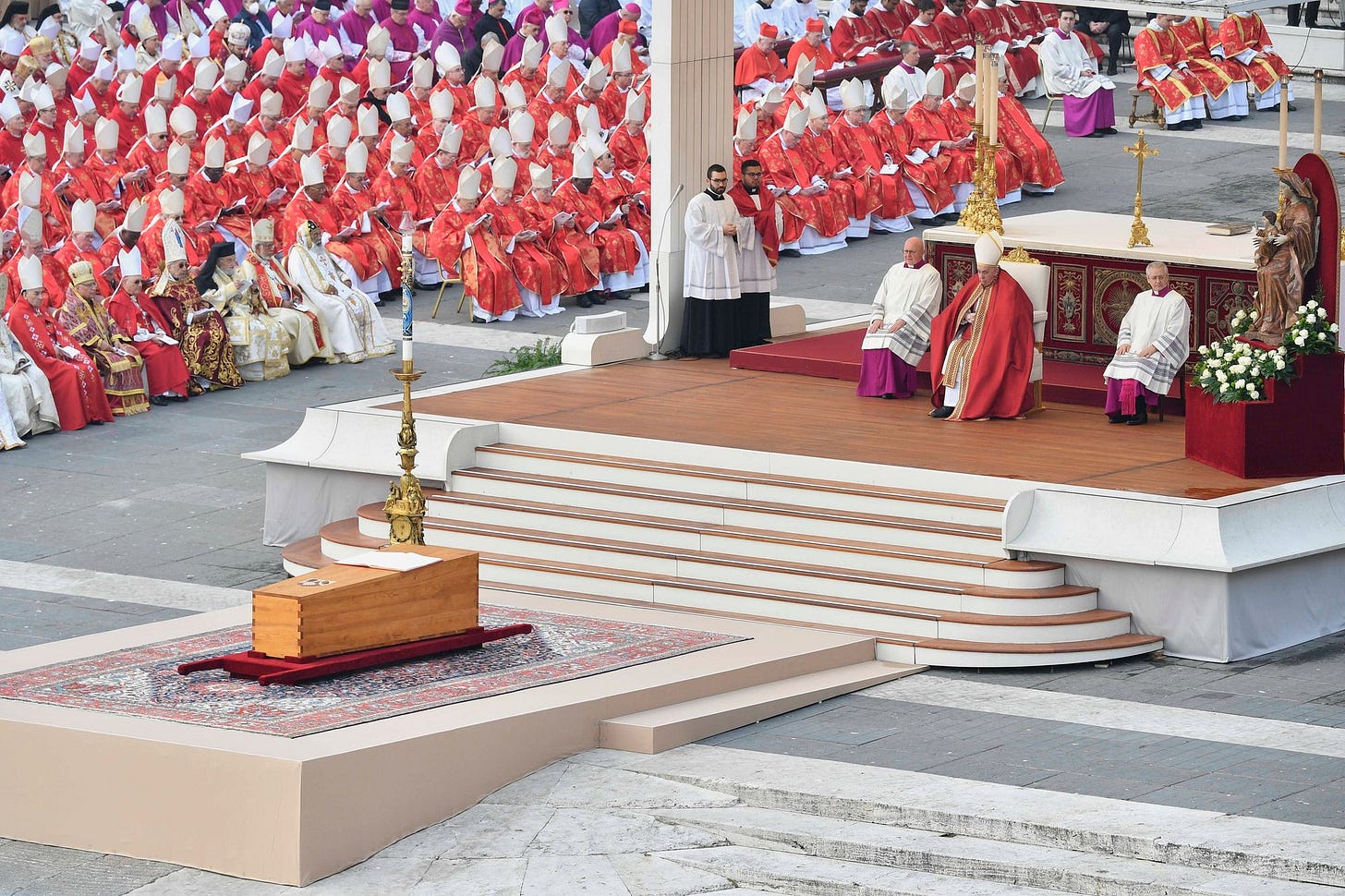A funeral for a ‘pope emeritus’
Because of his unusual role as pope emeritus, Benedict's funeral became something of an ecclesiastical Rorschach test.

The funeral of Pope Benedict XVI began in a thick mist Thursday morning. While the gathered crowd struggled initially to get a clear view of the altar, it was also hard for some mourners to see clearly what kind of event the funeral was meant to be.
It had been several centuries since the Church had to arrange the final liturgy for a pope who had not die…
